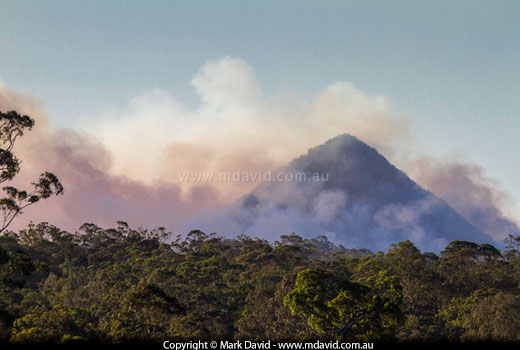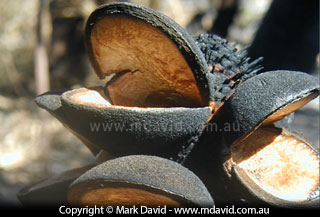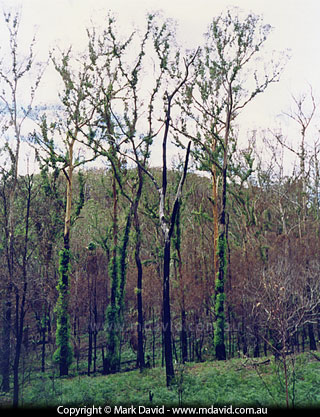
There’s a common belief that fires are good for the Australian bush. And there’s a lot of truth in that too. But like many things, the more you look into it the more complicated it gets. The full story of fire in the Australian bush is too much for this website (or possibly for any website). However there’s enough room here for a few important points.

Before Europeans came to Australia, the aboriginal people used fire to help them manage their environment. They used a practice called mosaic burning. Mosaic burning is a system of using patches of small, low-intensity fires to sweep through the understorey of the bush. These fires didn’t normally develop into high-intensity destructive fires. That’s because fuel levels — the build-up of old and dead foliage — were kept at low levels by these fires.
These low-intensity fires are sometimes called ‘cool fires’. That might sound weird but it’s a good description because it draws attention to the fact that these fires don’t reach the extreme, destructive high temperatures of other types of fires. They had minimal impact on the wildlife too. The fires moved slowly and the animals could often run to safety.
This system favoured certain species of plants, including the Eucalpyts (gum trees). The frequency of fires might have helped the gum trees become a dominant feature of the Australian environment.
These days, controlled burns (also called hazard-reduction burns) are used to prevent fuel levels building up too much. These cooler types of deliberately-lit fires are also sometimes used to control weed infestations.
Seeds and fire

These Banksia seed pods have opened after a fire, allowing the seeds to fall to the ground.
Take a look at some Banksia seedpods and you might wonder how the seeds are supposed to get out. The seeds are safely stored inside. When a fire sweeps through the area the heat from the fire makes the seed pods open (see the photo below) and the seeds fall out, ready to germinate in the ash. Even if the fire killed the plant which made the seeds, the seeds will provide a new generation of that species in that area. There are many Australian plants which benefit from fires in a similar way.
Too much of a good thing?
Despite the fact that some species of plants need the heat from a fire to propagate, too many fires can actually be bad for them. Take the example of the Banksias mentioned above. If another fire sweeps through before the new plants have had a chance to reach seed-producing age then that species won’t be able to replace itself with another generation. It’s going to be the end for that species in that area.
Poor soils
Australia has the poorest soils of any continent on the planet. That’s because the volcanism, mountain formation and glaciation that creates new soils happened such a long time ago. In many parts of Australia the topsoil layer is very thin or doesn’t even exist at all. There are very few nutrients left in it.
When a fire sweeps through the bush, the wind carries nutrients away as particles in the smoke, to wash down in the rain into rivers or the ocean. So every time a bush fire burns a patch of the Australian bush it might be helping some species of plants to breed, but it’s also making the poor soils a tiny bit poorer.

After surviving a bush fire these trees needed to replace their leaves in a hurry. Dormant buds under the bark, called epicormic buds, sprouted and in the following weeks the trees covered themselves with this fuzzy layer of new foliage.






